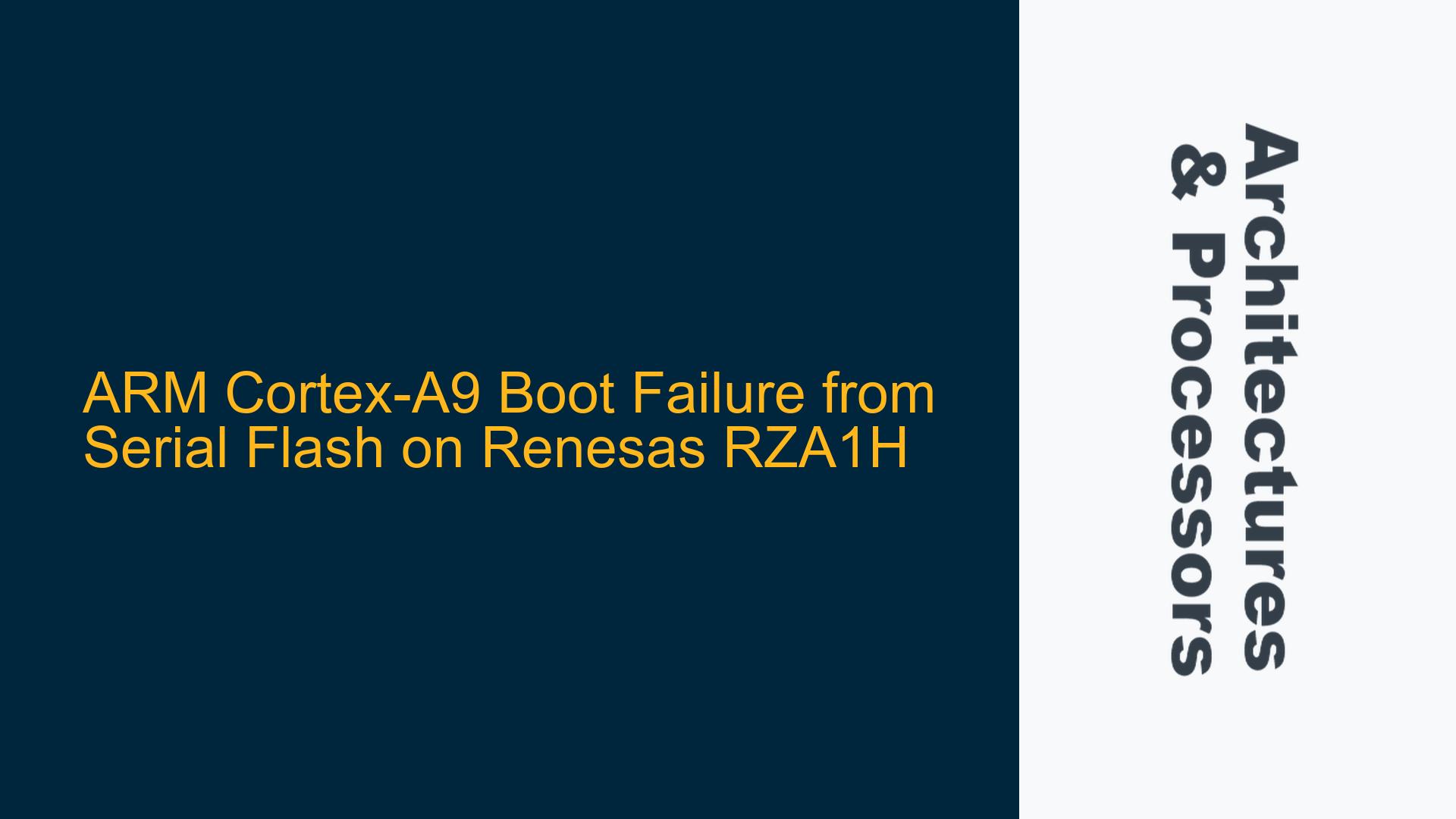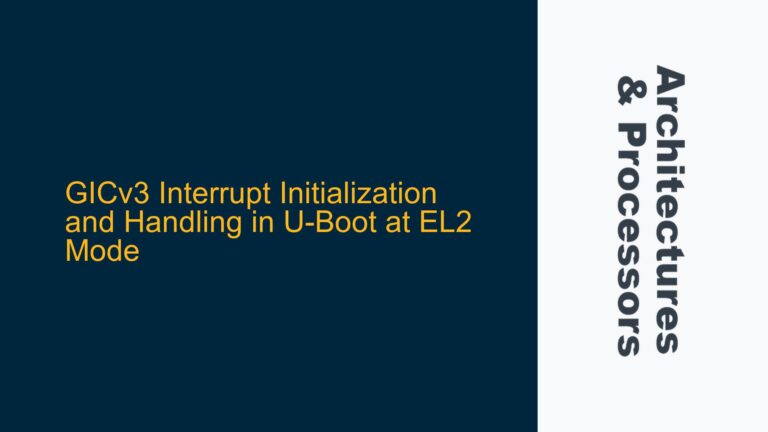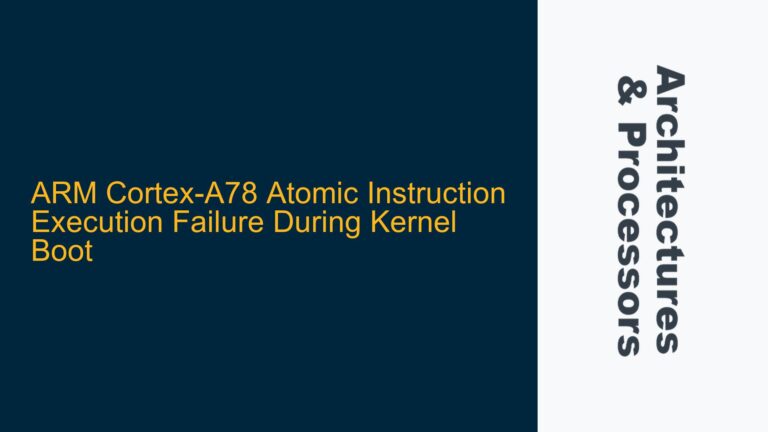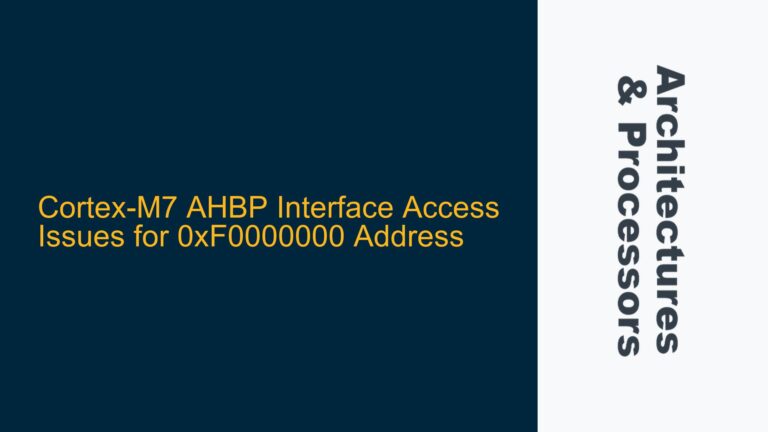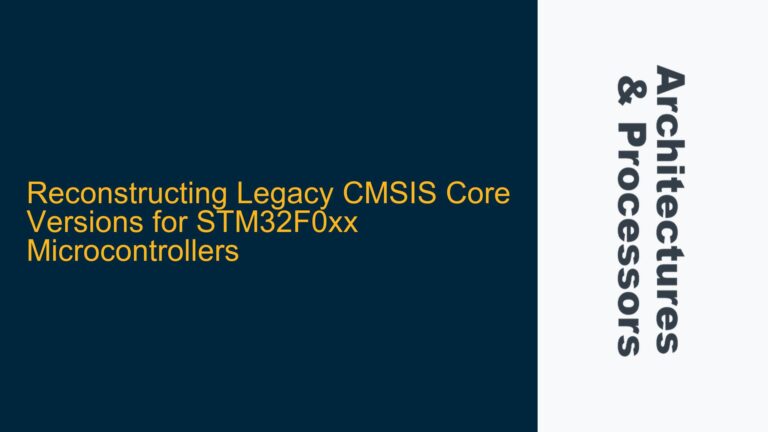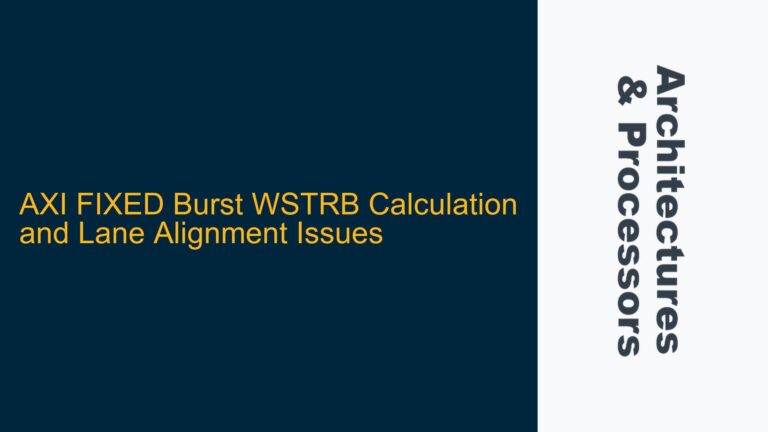ARM Cortex-A9 Boot Failure from Serial Flash on Renesas RZA1H
Bootloader and Application Binary Configuration in Serial QSPI Flash
The Renesas RZA1H microcontroller, based on the ARM Cortex-A9 architecture, is designed to support booting from various memory interfaces, including serial QSPI flash. In this scenario, the system is configured to boot from serial flash by setting the hardware BOOT MODE to 3. The bootloader binary is flashed at address 0x18000000, and the application binary is flashed at address 0x18080000 in the serial QSPI flash using J-Link commander scripts. The expectation is that the system should boot autonomously upon power-up. However, the system fails to boot, and the reset line of the target board is continuously pulled low, indicating a boot failure.
The Cortex-A9 processor relies on the bootloader to initialize the system and load the application binary into memory. The bootloader is typically responsible for setting up the memory controller, configuring the clock tree, and initializing essential peripherals before handing control over to the application. The continuous reset condition suggests that the processor is unable to execute the bootloader code successfully, leading to a system reset loop.
Incorrect Boot Mode Configuration and Flash Memory Access Issues
One of the primary causes of boot failure in ARM Cortex-A9 systems is an incorrect boot mode configuration. The Renesas RZA1H microcontroller supports multiple boot modes, each corresponding to a different memory interface. If the hardware BOOT MODE is not set correctly, the processor may attempt to boot from an incorrect memory interface, leading to a failure to fetch the bootloader code. In this case, the BOOT MODE is set to 3, which corresponds to booting from serial flash. However, if the hardware configuration does not match the expected boot mode, the processor will not be able to access the serial flash memory.
Another potential cause is improper flash memory access. The serial QSPI flash memory must be correctly initialized and accessed by the bootloader. If the bootloader binary is not correctly flashed at the expected address, or if the flash memory is not properly configured, the processor will not be able to fetch the bootloader code. Additionally, the timing parameters for accessing the serial flash memory must be correctly set in the bootloader to ensure reliable read operations. Incorrect timing parameters can lead to read errors, causing the bootloader to fail.
The reset line being continuously pulled low suggests that the watchdog timer or a similar mechanism is causing the system to reset repeatedly. This behavior is typical when the processor fails to execute the bootloader code within a specified time frame. The watchdog timer is often used to detect and recover from system hangs or boot failures. If the bootloader does not disable or correctly manage the watchdog timer, the system may enter a reset loop.
Verifying Boot Mode Configuration and Flash Memory Initialization
To troubleshoot the boot failure, the first step is to verify the hardware BOOT MODE configuration. Ensure that the BOOT MODE pins on the Renesas RZA1H microcontroller are correctly set to mode 3, corresponding to booting from serial flash. This can be done by inspecting the hardware schematic and physically verifying the state of the BOOT MODE pins on the target board. If the BOOT MODE is incorrect, the system will not boot from the serial flash memory.
Next, verify that the bootloader binary is correctly flashed at address 0x18000000 in the serial QSPI flash. Use the J-Link commander or a similar tool to read back the contents of the flash memory and compare it with the original bootloader binary. Any discrepancies indicate a flashing error, and the bootloader binary should be re-flashed. Additionally, ensure that the application binary is correctly flashed at address 0x18080000.
The bootloader must correctly initialize the serial QSPI flash memory to enable reliable read operations. This includes setting the correct timing parameters for the flash memory interface. The timing parameters are typically specified in the flash memory datasheet and must be configured in the bootloader code. Verify that the bootloader code correctly sets the timing parameters for the serial QSPI flash memory. If the timing parameters are incorrect, the bootloader may fail to read the flash memory, leading to a boot failure.
The watchdog timer must be correctly managed by the bootloader to prevent the system from entering a reset loop. The bootloader should disable the watchdog timer or periodically reset it to prevent a timeout. Verify that the bootloader code correctly disables or manages the watchdog timer. If the watchdog timer is not correctly managed, the system will reset repeatedly, leading to a continuous reset condition.
Implementing Correct Bootloader Initialization and Debugging Techniques
If the bootloader binary is correctly flashed and the hardware BOOT MODE configuration is verified, the next step is to ensure that the bootloader code correctly initializes the system. The bootloader must set up the memory controller, configure the clock tree, and initialize essential peripherals before handing control over to the application. Verify that the bootloader code correctly initializes the memory controller and configures the clock tree. Any errors in the initialization code can prevent the system from booting successfully.
Debugging the bootloader code is essential to identify and resolve any issues. Use a debugger to step through the bootloader code and verify that each initialization step is executed correctly. Pay particular attention to the memory controller and clock tree configuration, as these are critical for system boot. If any errors are detected, modify the bootloader code to correct the initialization sequence.
The bootloader must also correctly load the application binary from the serial QSPI flash into memory. Verify that the bootloader code correctly reads the application binary from the flash memory and loads it into the expected memory location. Any errors in the loading process can prevent the application from executing correctly. Use the debugger to verify that the application binary is correctly loaded into memory and that the bootloader hands control over to the application.
If the bootloader and application binaries are correctly flashed and the bootloader code is verified, the next step is to check for any hardware issues. Inspect the target board for any soldering defects or damaged components that could affect the boot process. Pay particular attention to the serial QSPI flash memory interface and the reset circuitry. Any hardware issues can prevent the system from booting successfully.
Final Verification and System Boot
Once all the above steps are completed, perform a final verification of the system boot process. Power on the target board and observe the behavior of the reset line. If the reset line is no longer continuously pulled low, the system should boot successfully. Use a debugger to verify that the bootloader and application code are executed correctly. If the system still fails to boot, repeat the troubleshooting steps to identify any remaining issues.
In conclusion, boot failure in ARM Cortex-A9 systems can be caused by incorrect boot mode configuration, improper flash memory access, and errors in the bootloader code. By verifying the hardware BOOT MODE configuration, ensuring correct flash memory initialization, and debugging the bootloader code, the boot failure can be resolved. Proper management of the watchdog timer and thorough hardware inspection are also essential to ensure successful system boot.
